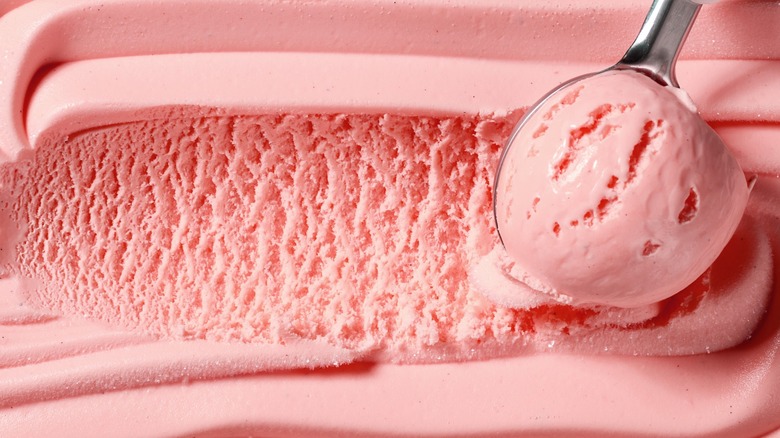There's A Huge Difference Between Premium And Regular Ice Cream
When you're picking out a store-bought chocolate ice cream, you might notice some of them are labeled "premium" –- with a hefty price tag to match. It's not just a marketing ploy; the International Dairy Foods Association (IDFA) actually has a list of standards that determine whether an ice cream can be marketed as one of four quality tier segments. Whether an ice cream counts as premium or regular depends on three factors: overrun, fat content, and quality of ingredients.
"Overrun" refers to the ratio of air incorporated in the ice cream to the rest of the ingredients. Fat content, on the other hand, most often refers to the amount of milkfat in the ice cream. Quality of ingredients is the most subjective of the three, but is just as important in determining an ice cream's texture and flavor.
The IDFA's quality tiers are defined by the interplay of these factors. The highest tier, "superpremium," means that the ice cream is made with very low overrun, high fat content, and the finest ingredients available. "Premium" ice cream has lower overrun, higher fat content, and higher ingredient quality than the "regular" tier, which meets the FDA baseline standards for ice cream. The lowest tier, "economy," is typically reserved for ice creams that meet the bare minimum standards for overrun and fat content.
How overrun and fat content make ice cream more premium
Overrun makes a huge difference on the texture and flavor of ice cream. A lower overrun results in denser and more indulgent ice cream, although going too low can also make it too stiff to enjoy. Superpremium brands like Häagen-Dazs, for instance, have an optimal 20% air content, whereas a lower-tier brand like Breyers has 45% air content in its vanilla ice cream. Since brands don't put their ice cream's overrun on the label, you can get an idea by looking at its weight instead -– the heavier a gallon is, the more likely it is to be denser and therefore have less air.
Fat content is printed on every label, which makes it a more reliable way of finding premium ice creams. Ice cream with higher fat content takes longer to melt and has fewer noticeable ice crystals, giving it a smoother mouthfeel. High-fat ice creams also taste creamier and less cloying, since fat tends to temper the sweetness of corn syrup.
Other ingredients mixed into the ice cream can affect its weight and fat content, however, so neither is a perfect way to determine whether it's premium or regular. For example, Ben & Jerry's has so many flavors of ice cream with toppings that their fat content numbers are all over the place. To pick out the best quality ice cream, it might be best to compare these numbers on the more basic flavors, like chocolate or vanilla.

